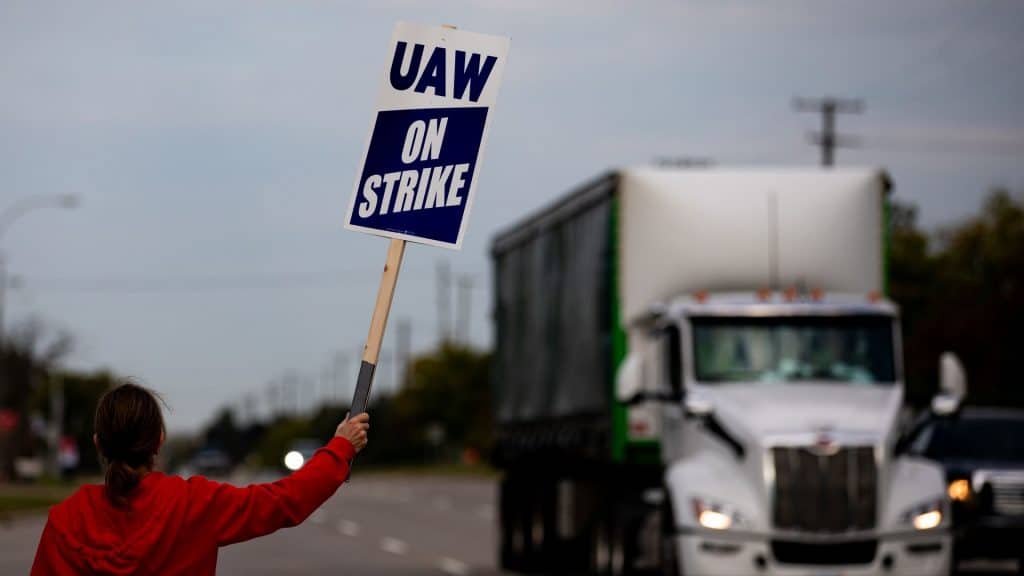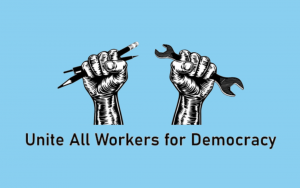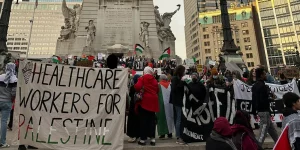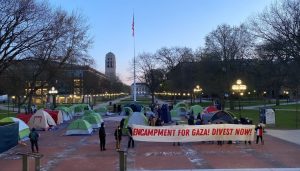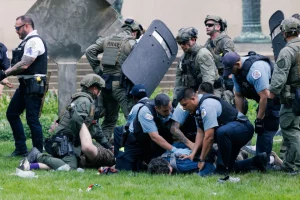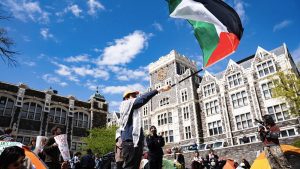In a clear act of retaliation against striking auto workers, the Big Three have laid off thousands of employees since the United Auto Workers (UAW) strikes began on September 15.
At Ford, more than 600 non-striking workers were laid off at the Wayne, Michigan plant just two days after the strike began. Meanwhile, GM and Stellantis have laid off a combined 3,000 workers, with more layoffs expected. At the same time, a number of auto suppliers for the Big Three have also been laying off substantial portions of their own workforces to retaliate against the UAW strike. If the strike continues for several more weeks or months, it is quite possible that these layoffs (and the use of scab labor) will increase exponentially, as the companies seek to protect profits and divide the workforce in order to weaken the strike. Directly confronting and resisting these layoffs must be a central task of the entire union if they wish to protect their jobs, win their demands, and build union solidarity.
While the UAW has condemned the layoffs, the auto companies claim that they are an inevitable result of the strike, which, by disrupting manufacturing and distribution across several major plants, has left many other workplaces without the necessary materials needed to continue production. However, it’s important to note that these layoffs are not only a corporate response to the chaos created by the strike; they are quite obviously an explicit tool of retaliation that the auto companies are using to punish the UAW and its members in order to break the strike.
As UAW president Shawn Fain said in a response to the layoffs: “if the Big Three decide to lay people off who aren’t on strike, that’s them trying to put the squeeze on our members to settle for less.” Fain also made the point that the layoffs were unnecessary, and the company could afford to continue paying those laid-off workers. With more than $20 billion in combined profits for just the first half of this year, they definitely could.
But these layoffs are not only about squeezing workers — they are also part of a clear strategy by the Big Three to try to withstand the worst effects of the strike at the expense of the workers themselves. GM, Ford, and Stellantis, though they continue to rake in record profits, are using these layoffs to save millions in wages while simultaneously sowing fear and insecurity among all of those not yet on strike, many of whom could be laid off at a moment’s notice. This is a clear attempt not only to put pressure on the strikers, as Fain explains, but to create divisions within the union and among different sectors of workers — those still receiving paychecks, those receiving strike pay, and those being laid off.
Meanwhile, the companies are using the state and bourgeois law to punish workers even further by refusing to pay contractually-obligated supplementary unemployment benefits, and arguing that those laid off during a strike do not qualify for state unemployment. This claim may prove to be true for some workers, thanks to anti-worker “right to work” legislation in several states like Kansas and Michigan (which is still a right-to-work state until March 2024), where layoffs are taking place.
It is not out of the question that management will try to make these layoffs permanent as further punishment against the strike and the bold demands the union is putting forward. This makes it necessary for the union to stop the “business as usual” approach to layoffs. They have to treat this act of retaliation as a serious threat that requires a direct response, and not simply rely on the law or the courts, which fail the working class all the time.
Although the stand-up strike strategy has allowed Fain and the UAW to gain public support while also causing chaos within the production processes of the Big Three, the top-down nature of the struggle so far means that these laid-off workers, and many others, have no agency in decisions about their strike, or about fighting layoffs.
To ensure these workers are compensated and get their jobs back, the rank and file must demand that the strike take up the reinstatement of all workers laid off in the UAW and related industries directly as part of its demands. In order to fight these layoffs, the UAW should organize meetings in every single local to unite all workers — those on strike, those who are not on strike, and those who have been laid off. This would allow workers (many of whom are already organizing flying squadrons, fighting management on the floor, and refusing to work overtime) to discuss together how to continue the strike, how to resist scabs, and how to develop a strategy that can best fight these layoffs both during the strike and after. Every new wave of layoffs should be met with further walkouts and an escalation of the strike. The members should make sure that any new contract guarantees that laid-off workers are rehired and receive compensation for lost wages.
But beating the Big Three and building a union capable of defending those gains will require the collective efforts, creative energy, and active engagement of all of the membership, not only the elected leaders, staff, and bureaucrats. Every worker is capable of leading, and ultimately, it is the workers themselves who are on the front lines of struggle every day and who know best how to organize themselves to fight the bosses. This is why self organization, in the form of strike committees and mass meetings of rank-and-file workers, is so important.
Such a self-directed struggle against these layoffs would not only create greater solidarity among workers within the union, but would help to build the kind of organization needed to weather a strike long enough to win all of their demands, including the bold demand for a 32 hour workweek, which could be an essential part of the fight against layoffs as the industry transitions to the production of electric vehicles.
Just as the workers of the great GM sit-down strikes and their communities and families did in 1937, rank-and-file auto workers, alongside workers across the country, have it in their power today to rebuild a fighting labor movement.


